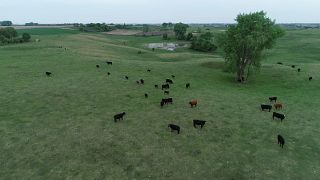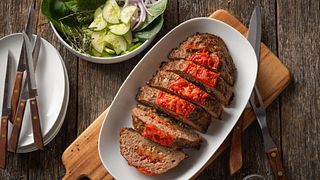raising beef
Raising beef is a complex process, but throughout the entire journey, one thing remains constant – the shared commitment to raising cattle in a safe, humane and environmentally sustainable way. Currently, more than 90% of U.S. farms and ranches are family-owned and operated. Learn more about the people who are invested in raising high-quality, sustainable beef for generations to come.
rethink the ranch map
Click on our interactive map to see how beef farmers and ranchers around the country are implementing land-saving, wildlife-preserving, and award-winning environmental efforts in your state.
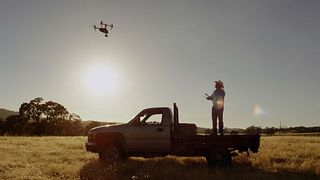
rethink the ranch
Much has changed since the days of cowboys, cattle drives and the Old West. Today, it's more about drones, apps and computers. Learn about real, modern ranchers, how they care for the cattle, what inspires them and why they work so hard day after day.

BEEF QUALITY ASSURANCE: RAISING THE BAR ON RAISING CATTLE
The beef community has a long-standing commitment to caring for their animals and providing families with the safest, highest-quality beef possible. The Beef Quality Assurance (BQA) program trains farmers and ranchers on best practice cattle management techniques to ensure their animals and the environment are cared for.

The Beef production story
The process of raising beef is among the most complex of any food. Across this journey, one primary thing remains constant – the beef community’s shared commitment to raising cattle in a safe and environmentally sustainable way.
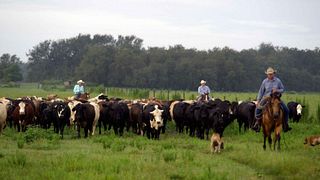
beef in a healthy, sustainable diet
Learn how beef promotes health and helps prevent nutrient deficiencies, and the ways in which cattle play a unique role in our food system by upcycling inedible plants to high-quality protein.
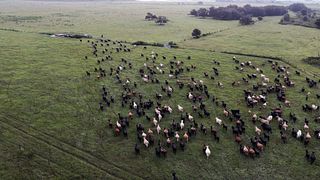
Ensuring Beef Safety, from Farm to Fork
From farm to fork, everyone plays an important role in beef safety. Safety plays an essential function across the beef lifecycle journey – from the cattle ranches across the U.S., to the meat processing plants, to your kitchen table.
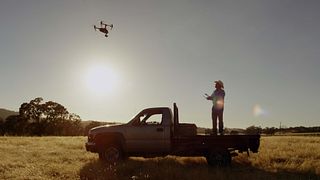
Animal Care and the modern rancher
Cattle ranchers have many tools to keep the animals in their care healthy and safe, including nutrition programs, veterinary care and good management practices that are science-based, regulated and, above all, good for the animal and the consumer.
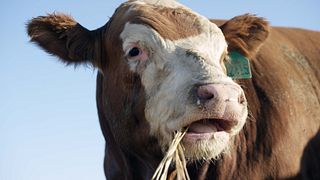
Beef Sustainability
To the beef community, sustainability involves more than environmental considerations. A sustainable food supply balances efficient production with environmental, social and economic impacts with Beef Quality Assurance protocols.
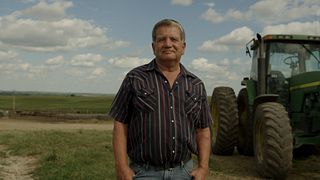
meet members of the beef community
Join us as we travel across the country and meet some of the hard-working cattle farmers and ranchers who help feed the world by bringing beef from pasture to plate.
CATTLEMEN AND THE ENVIRONMENT
Today beef is produced using fewer resources than ever before. But conservation is never complete; ranchers work hard to feed a growing population with with regenerative practices that reduce water use, care for the land, and protect the environment.
RANCHERS & OUTDOORSMEN: SHARED VALUES OF CARING FOR THE LAND
When you picture a rancher, you probably picture a cowboy hat, boots and a horse. You’re probably not picturing a conservationist. And yet, that’s exactly what ranchers are. While raising cattle, they work to protect and conserve the land that they have been entrusted to manage and that we all depend on. Without them, this land would be developed and the open spaces we all cherish would be lost.
BEEF SUSTAINABILITY FOR KIDS
Beef farmers and ranchers are committed to raising cattle in a way that is good for the planet. In fact, cattle do more than provide beef for you to eat: they also preserve the land where they live. Use the videos, games and images below to learn about the hard-working families who help feed the world and care for land across the United States.
- U.S. Department of Agriculture and U.S. Department of Health and Human Services. Dietary guidelines for Americans, 2020-2025. 9th Edition. Available at https://www.dietaryguidelines.gov/.
- U.S. Department of Agriculture, Agricultural Research Service, Nutrient Data Laboratory. FoodData Central. Available at fdc.nal.usda.gov (Beef composite, cooked - NDB Number: 13364).
- American Academy of Pediatrics Committee on Nutrition. Pediatric Nutrition, 8th Ed. Itasca, IL: American Academy of Pediatrics, 2019.
- Schwarzenberg SJ, Georgieff MK, Committee on Nutrition. Advocacy for improving nutrition in the first 1000 days to support childhood development and adult health. Pediatrics 2018;141(2).
- Gow ML, Ho M, Burrows TL, Baur LA, Stewart L, Hutchesson MJ, Cowell CT, Collins CE, Garnett SP. Impact of dietary macronutrient distribution on BMI and cardiometabolic outcomes in overweight and obese children and adolescents: a systematic review. Nutr Rev 2014;72(7):453-70.
- Hermoso M, Vucic V, Vollhardt C, Arsic A, Roman-Vinas B, Iglesia-Altaba I, Gurinovic M, Koletzko B. The effect of iron on cognitive development and function in infants, children and adolescents: a systematic review. Ann Nutr Metab 2011;59(2-4):154-65.
- Wallace TC, Blusztajn JK, Caudill MA, Klatt KC, Natker E, Zeisel SH, Zelman KM. Choline: The Underconsumed and Underappreciated Essential Nutrient. Nutr Today 2018;53(6):240-53.
- Lassi Z, Moin A, Bhutta Z. Nutrition in Middle Childhood and Adolescence. In: Bundy DAP, Silva Nd, Horton S, et al., editors. Child and Adolescent Health and Development. 3rd edition. Washington (DC): The International Bank for Reconstruction and Development / The World Bank; 2017 Nov 20. Chapter 11. Available from: https://www.ncbi.nlm.nih.gov/books/NBK525242/
- Norris SA, Frongillo EA, Black MM, Dong Y, Fall C, Lampl M, Liese AD, Naguib M, Prentice A, Rochat T, et al. Nutrition in adolescent growth and development. Lancet 2022;399(10320):172-84.
- Friedman AJ, Chen Z, Ford P, Johnson CA, Lopez AM, Shander A, Waters JH, van Wyck D. Iron deficiency anemia in women across the life span. J Womens Health (Larchmt) 2012;21(12):1282-9.
- Agarwal S, Fulgoni VL, 3rd. Contribution of beef to key nutrient intakes in American adults: an updated analysis with NHANES 2011-2018. Nutr Res 2022;105:105-12.
- Klurfeld DM. The whole food beef matrix is more than the sum of its parts. Crit Rev Food Sci Nutr 2022:1-9.
- Black MM. Micronutrient deficiencies and cognitive functioning. J Nutr 2003;133(11 Suppl 2):3927S-31S.
- Berge JM, Wall M, Hsueh TF, Fulkerson JA, Larson N, Neumark-Sztainer D. The protective role of family meals for youth obesity: 10-year longitudinal associations. J Pediatr 2015;166(2):296-301.
- Office of Disease Prevention and Health Promotion, Department of Health and Human Services. Help your child build a healthy eating routine. Available at https://www.dietaryguidelines.gov/sites/default/files/2021-12/DGA_KidsTeens_FactSheet-508c.pdf.
rancher recipes
These Rancher dishes originated on the farm – but even urban cowboys will appreciate these down-home, top-notch, feel-good meals. Crafted by ranchers across America, these meals are flavorful, nutritious and proven to satisfy the heartiest of appetites.

